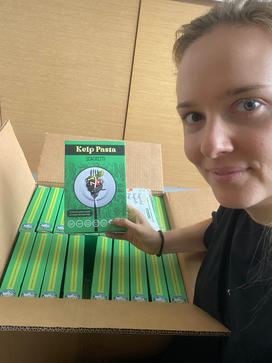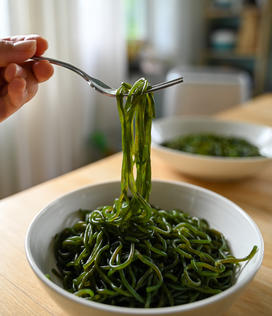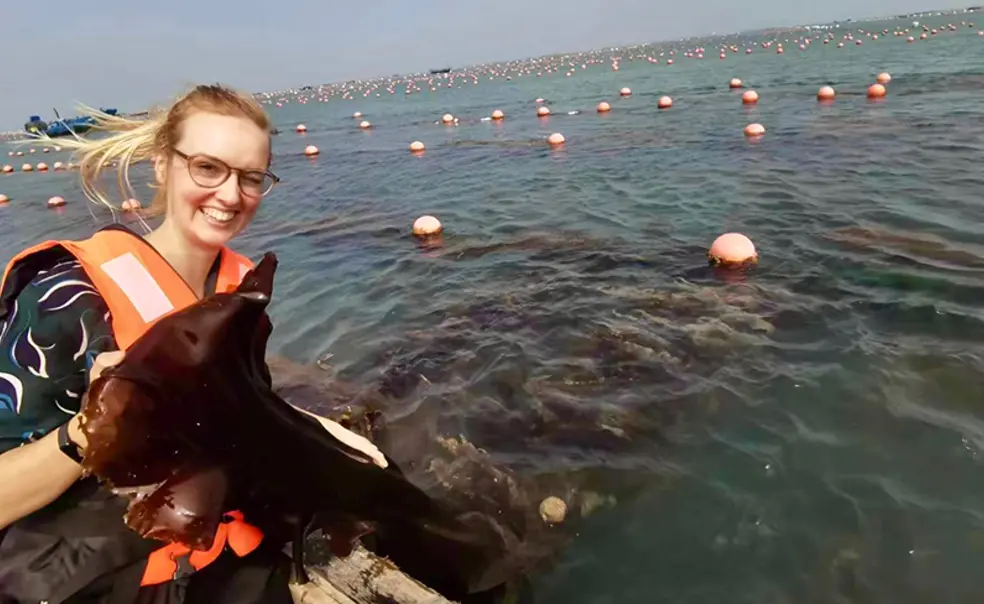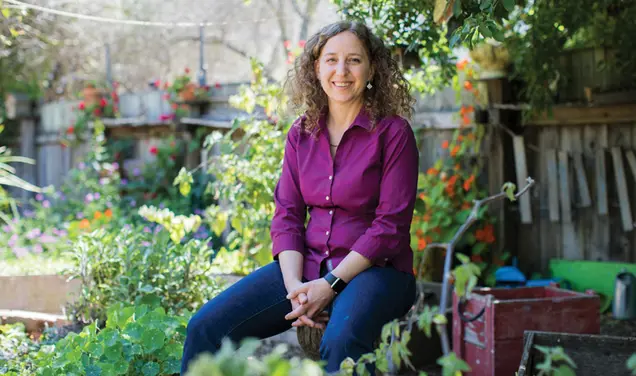Helen Park ’18 Launches ‘Kelp Pasta’ With Small Carbon Footprint
Park’s ‘seaghetti’ is low-calorie, gluten-free, vegan, and available from Amazon
In 2023, Helen Park ’18 stumbled upon a seaweed market in Qingdao, a seaside city in China, where various farmers hawk their kelp-based products. Then a Ph.D. student in biochemistry engineering at Tsinghua University in Beijing, Park had long been fascinated with seaweed. “It is probably the most sustainable food source that we could have,” Park says, citing the aquatic plant’s much lower carbon footprint than land-based grains.
At the event, Park got to talking with a group of farmers whose company name in Mandarin translates in English to Treasure of the Sea. “I was telling them about how almost no one eats seaweed in America,” Park says, explaining that for many, the product tastes “too fishy.” But when the farmers told her that there were ways to remove the salty aftertaste, Park was intrigued. “It kind of became a collaboration between us,” Park says.
Two years later, Park has founded Pasta from the Sea, a company selling its own brand of kelp-based pasta, marketed as “seaghetti.” The product, which is low-calorie, gluten-free, and vegan, retails for $9.99 per box on Amazon.

Born in Connecticut, Park studied chemical and biological engineering at Princeton. Inspired by her undergraduate work in Professor José L. Avalos’ lab, Park pursued a Ph.D. at Tsinghua University to work with George Chen, a scientist who specializes in sustainable biotechnology.
During her time overseas, Park was motivated to create kelp pasta because of the sustainability advantages of seaweed. “It grows naturally in the ocean,” Park says. “You don’t need land, you don’t need water, you don’t need fertilizer, [and] it grows incredibly quickly.” Park adds that seaweed absorbs carbon dioxide faster than land-based plants.
But the prospect of kelp pasta held other advantages for Park. As a vegan with gluten sensitivity, kelp-based pasta offered an alternative to traditional spaghetti. “There’s really no downside,” Park says, “as long as you like what it tastes like.”
And therein lay the rub. Park discovered that most of the existing kelp pastas on the market had unpleasant textures or had too strong of an ocean flavor. “I hate the taste of seaweed,” Park says. “I’ve been just trying to see if there’s a way to get it to not taste so horrible.”
To craft a more pleasant texture, Park partnered with the farmers she met in Qingdao to develop her pasta, using a blend of two different seaweed species originally developed in Japan but not yet produced stateside. And to remove the salty taste, Park suggests soaking the pasta in water for 20 to 30 minutes before boiling for 2 to 3 minutes and serving with your sauce and style of choice.

(Following these instructions, this PAW writer tried the pasta with homemade marinara sauce and meatballs. Though a hint of sea flavor remained, the sauce was able to mask that taste, proving the pasta is a versatile base with a texture close to al dente. However, this writer suspects the pasta might pair better as the base for a seafood linguini or an East Asian-style noodle dish.)
In 2024, Park honed the product with taste-test kiosks set up in New Haven, Connecticut, and Central Park in Manhattan. While some passersby declined to sample the product due to its dark green hue, Park remembers a mother who stopped by with her two young children. After the children tried the pasta, they asked for more. Park recalls that at that point, the mother was impressed, exclaiming, “That’s a winner.”











No responses yet